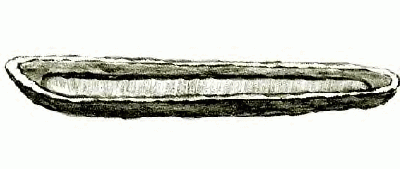|
Canku Ota |
|
(Many Paths) |
|
An Online Newsletter Celebrating Native America |
|
November 4, 2000 - Issue 22 |
|
|
|
Archeologists have confirmed the antiquity of more than 85 Indian canoes discovered sticking out of a lake bed near Gainesville, Florida, earlier this year. The discovery of the prehistoric canoes in Newnan's Lake was the largest of its kind in the United States, Secretary of State Katherine Harris said in announcing the results of radiocarbon testing. The Florida Bureau of Archaeological Research confirmed the canoes range from 500 to 5,000 years old, with most built between 3,000 and 5,000 years ago. The wooden canoes had remained hidden and preserved at the bottom of the lake for centuries until water levels dropped during a dry spell. They were discovered in April by high school students working on an environmental project. Archeologists performed radiocarbon tests on 53 of the canoes, while recording their length, width, depth and where they were found. The canoes, likely used as fishing boats, were up to 22 feet long. Many had rounded sterns and bows. Tests on six canoes showed they were made of pine. After the find was documented, the canoes were reburied in the lake bottom. Otherwise, they would have crumbled in a matter of days if left exposed to the air and sun. State archaeologist James Miller said the documentation will be added to earlier data related to more than 300 canoes, including the oldest canoe found in Florida, a 6,000-year-old craft. Seminole Indian Chief James Billie said the lake's original name was Pithlachocco, a Seminole word meaning ''place of long boats.'' ''This may have been a factory where boats were made,'' he said.
Give Me of Your Bark Oh Birtch
Tree |
|
|
|
|
| Canku Ota is a free Newsletter celebrating Native America, its traditions and accomplishments . We do not provide subscriber or visitor names to anyone. Some articles presented in Canku Ota may contain copyright material. We have received appropriate permissions for republishing any articles. Material appearing here is distributed without profit or monetary gain to those who have expressed an interest. This is in accordance with Title 17 U.S.C. section 107. |
|
Canku Ota is a copyright of Vicki Lockard and Paul Barry. |
|
The "Canku Ota - A Newsletter Celebrating Native America"
web site and its design is the Copyright © 1999 of Paul C. Barry. |

